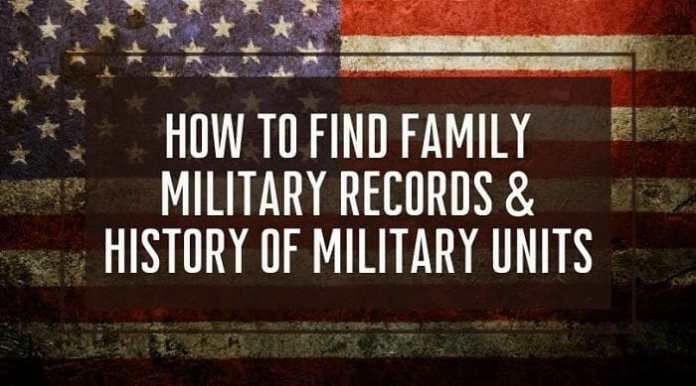How To Find Family Military Records Or History Of Military Units
- semperfigeek

- Dec 27, 2020
- 4 min read
Many want to know how to find military records on a family member. Others want to know about certain military units, their histories, etc. While the search options for these two categories (units versus individuals) vary, there are some issues they have in common that you’ll want to know about before starting your search.

For example, when trying to get more information on an individual unit or servicemember, knowing the service dates and locations is a big help. Also helpful–any specific wars, campaigns, or activities associated with the person or unit can be important data. Any personal information (Social Security numbers, dates of entry into service, location of entry, dates of unit activation or deactivation, etc.) is valuable.
Searching For Military Records Or History Of Military Units
Searching for military unit history can feel daunting, but knowing where and how to look is the way to begin. Where to look? That depends on whether you know a given unit’s base and location–even if it’s not the original base. Why does the location matter?
Because military bases have a keen interest in preserving their heritage and many employ at least one base historian who archives information critical to preserving the history of the base and the local area.
Even if all you have is the name of a base the unit occupied once-upon-a-time but was not the original or even final base the unit served at, it’s a link in the chain of that unit’s history and chances are good that a base will have records of where the unit went or where it came from.
Once you find a base to start your search at, you can start your search on unit history by calling the base historian directly but depending on your need for the information you may be referred to the base Public Affairs office for coordination.
Reasons For Your Records Request
If you are researching a book, film, script, or other media, you should contact Public Affairs FIRST. Private inquiries may be handled differently, but call first.
You may also wish to try searching for prior books written about the unit you’re looking for information on–you can search Amazon.com but don’t forget that there are also good resources in the local area (if you know where the unit was assigned) in the form of the reference desk at the public library.
If there is a state library in the area with a reference desk, that may actually provide the best source of reference desk-type information compared to the local public library, but your experience may vary–try both.
The author of this article worked for a time on a state library reference desk and can vouch for this as a good resource to get started–it’s definitely worth the time to call in many cases.
Searching For Individual Military Records
Family members have the easiest time getting access to military records of individuals and they also have the access to the most information. Researchers who are trying to get records for individuals should try, whenever possible, to obtain such records from a family member instead of trying to obtain them as a third party–you may need to coach the family members on how to apply for such military records (see below).
The official website of the National Archives, which is a key resource for many military records, advises that without consent of the veteran or next-of-kin, only limited information can be released from the Official Military Personnel File, “to the general public”.
Who is considered “general public”?
Those who are “not the veteran” and seeking information about a vet who is not next-of-kin. Who is considered next-of-kin? An un-remarried widow or widower, son, daughter, father, mother, brother or sister of the veteran.
Those who are members of the general public may resort to filing a Freedom Of Information Act (FOIA) request for information on individual veterans. Without the consent of the family and under a FOIA request, members of the general public may obtain the following:
Name
Service Number
Dates of Service
Branch of Service
Final Duty Status
Final Rank
Assignments and Geographical Locations
Military Education Level
Awards and decorations (eligibility only)
Photograph
Transcript of Courts-Martial Trials
Place of entrance and separation
Information available via FOIA if the veteran has died includes:
Place of birth
Date and geographical location of death
Place of burial
The National Archives reminds that “Most military records are on paper or microfilm and copies will need to be mailed to you. They are not typically available to view online.” This is true regardless of the nature of the request whether by family or general public FOIA requests.
Where To Search For Military Records
The Air Force official site and the federal official site USA.gov list multiple resources for those who want to locate or get more information on a military member past or present. Use of some of these resources may depend on whether you seek to correct a military record or simply access it.
Searching for individuals requires as much information as possible in the following areas:
Full name
Serial number where applicable
Social Security Number
Rank held at a specific time OR
Highest rank achieved
Names and dates of awards/decorations
Any units where individual was assigned
Dates of service
Military occupation
It is VERY IMPORTANT to include the reasons why you seek the information and your relationship to the service member where applicable. If you are not a relative it’s important to mention that. Some military record services may have a fee associated for those who are not family members.
The National Archives record-keeping policy for service member records includes a reminder that “Files at the Records Center are maintained as historical records only and are not updated to reflect current data on the former service member.”








Comments